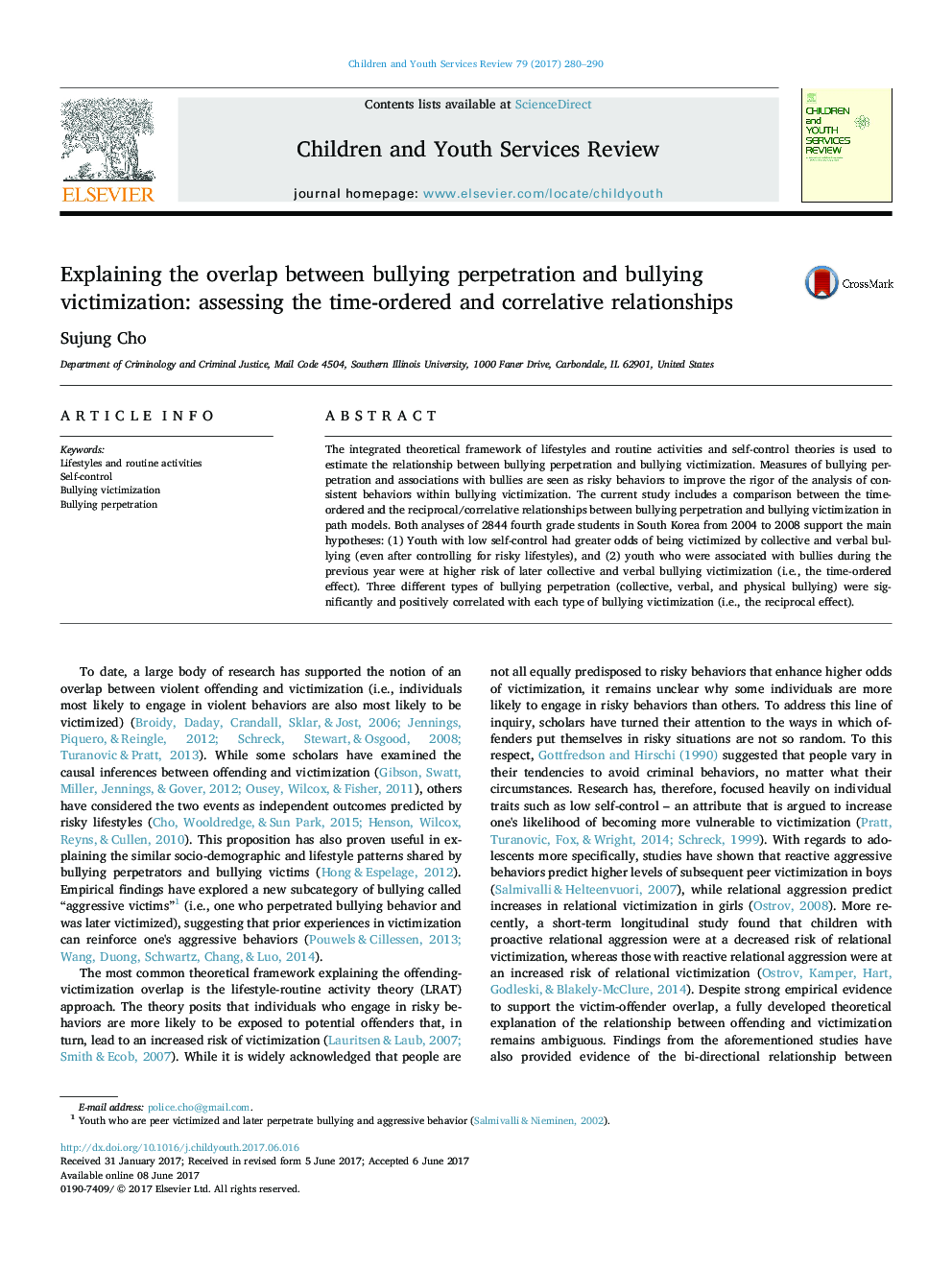| Article ID | Journal | Published Year | Pages | File Type |
|---|---|---|---|---|
| 4936367 | Children and Youth Services Review | 2017 | 11 Pages |
Abstract
The integrated theoretical framework of lifestyles and routine activities and self-control theories is used to estimate the relationship between bullying perpetration and bullying victimization. Measures of bullying perpetration and associations with bullies are seen as risky behaviors to improve the rigor of the analysis of consistent behaviors within bullying victimization. The current study includes a comparison between the time-ordered and the reciprocal/correlative relationships between bullying perpetration and bullying victimization in path models. Both analyses of 2844 fourth grade students in South Korea from 2004 to 2008 support the main hypotheses: (1) Youth with low self-control had greater odds of being victimized by collective and verbal bullying (even after controlling for risky lifestyles), and (2) youth who were associated with bullies during the previous year were at higher risk of later collective and verbal bullying victimization (i.e., the time-ordered effect). Three different types of bullying perpetration (collective, verbal, and physical bullying) were significantly and positively correlated with each type of bullying victimization (i.e., the reciprocal effect).
Related Topics
Health Sciences
Medicine and Dentistry
Perinatology, Pediatrics and Child Health
Authors
Sujung Cho,
